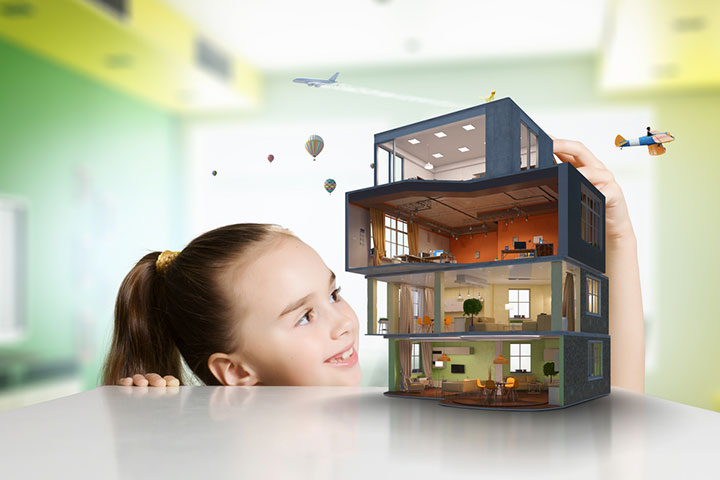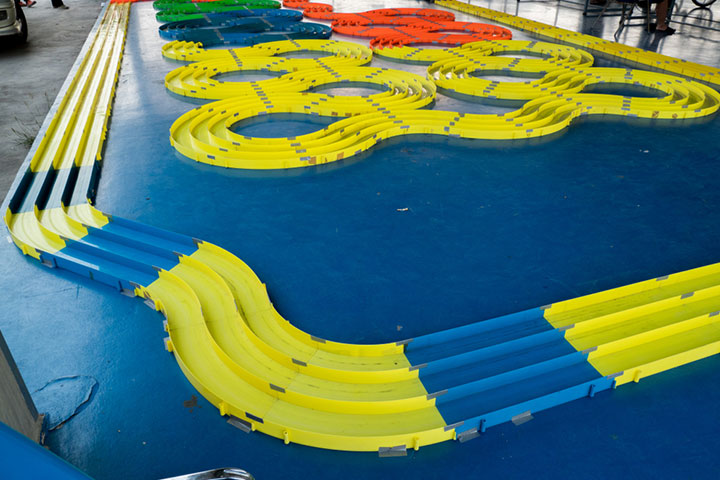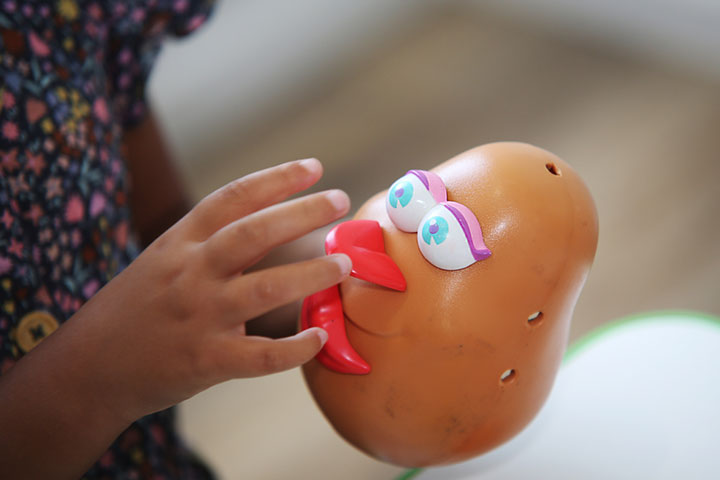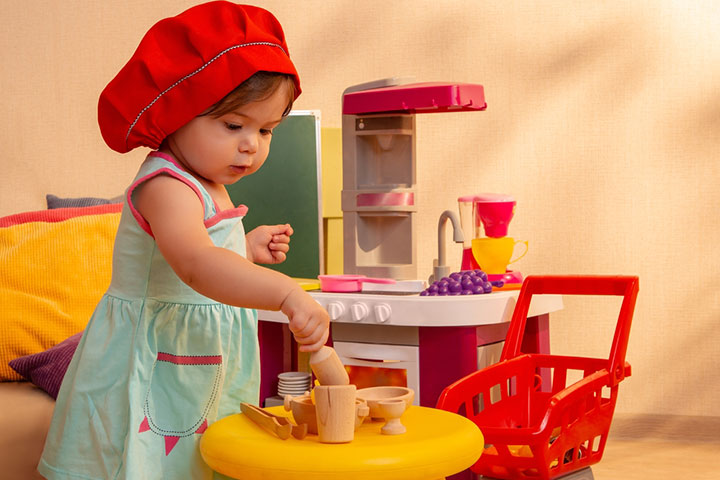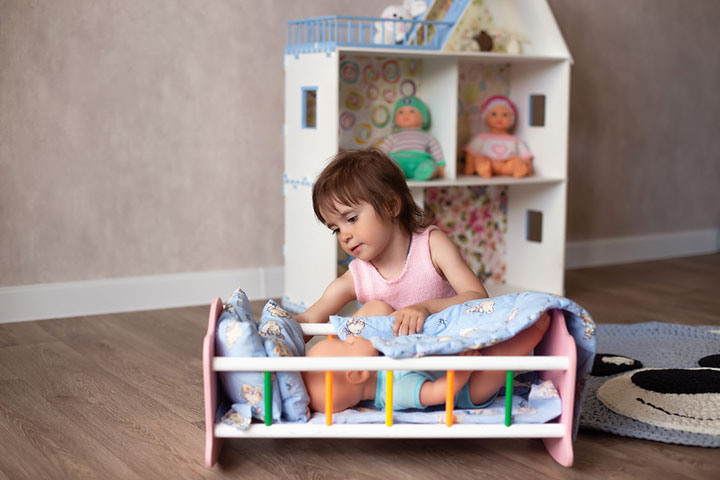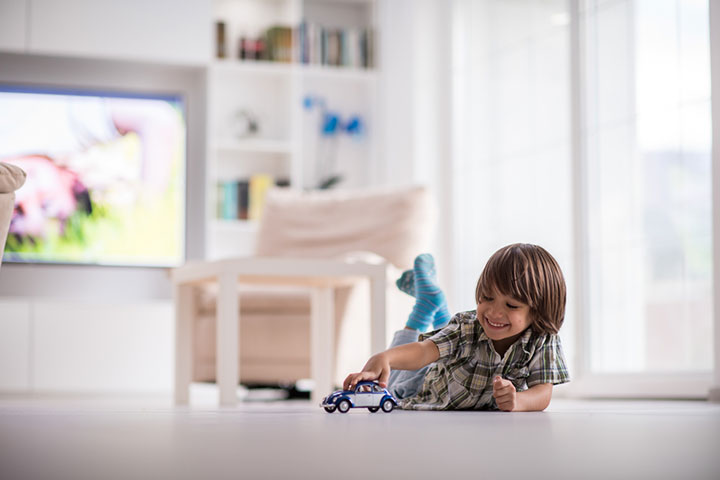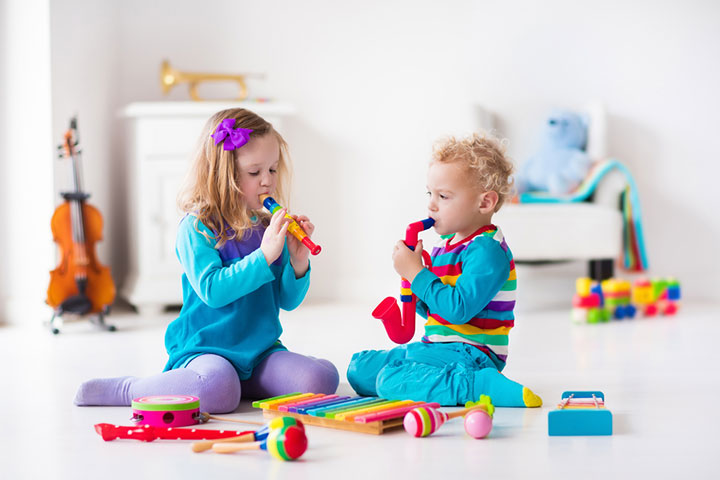
Image: Shutterstock
In your role as a parent, you’re keenly aware of the significance of your toddler’s early years for learning and development. Language skills are pivotal in shaping your child’s future communication and cognitive abilities. Fortunately, playtime transcends mere amusement. It emerges as a potent tool for enhancing language proficiency. This article focuses on some captivating toys that not only entertain but also nurture language development. From interactive farm sets to imaginative art supplies, these purposeful playthings engage your child’s imagination and establish a sturdy foundation for effective communication. Read on to know more!
1. Farm And Barn Toys
Image: Shutterstock
Engage your toddler’s imagination with farm and barn toys that offer a hands-on experience of the animal world. These toys provide opportunities for your child to learn new words while interacting with various animals, such as cows, horses, and chickens. As they explore the farm environment, they’ll naturally pick up vocabulary related to animals, their sounds, and their habitats. Encourage your toddler to describe the animals, imitate their sounds, and create imaginative stories involving their farm friends.
2. Dollhouse And Family
Image: Shutterstock
Dollhouses and miniature family sets create a world of make-believe where your child can engage in role-playing and storytelling. These toys promote language development by encouraging your toddler to articulate conversations and scenarios among the dollhouse family members. As they play, they’ll learn to express emotions, use descriptive words, and practice social interactions. These are all essential skills for effective communication.
3. Racetrack
Image: Shutterstock
Zoom into language development with a racetrack toy that ignites your toddler’s excitement. These toys offer opportunities for your child to describe the movements of the cars, predict outcomes, and engage in imaginative play. As they narrate races, describe strategies, and discuss winners and losers, they’ll naturally expand their vocabulary and improve their ability to express themselves.
4. Mr. Potato Head
Image: Shutterstock
This classic toy isn’t just about creating funny faces – it’s also a fantastic way to enhance language skills. Encourage your toddler to describe the different parts of Mr. Potato Head, use descriptive adjectives, and create stories involving this lovable spud. You can also introduce concepts like body parts, colors, and emotions, making learning a dynamic and entertaining experience.
5. Puzzles
Image: Shutterstock
Puzzles offer more than just problem-solving challenges; they also provide a language-rich environment for your toddler. As your child works on puzzles, they can practice naming shapes, colors, and objects. Engage in conversations about the puzzle pieces, ask questions about the images, and guide them in describing their progress. Puzzles foster vocabulary development and promote cognitive skills simultaneously.
6. Play Kitchen And Food
Image: Shutterstock
Fuel your toddler’s language development with a play kitchen and food set. These toys encourage your child to talk about cooking, eating, and sharing. As they play chef, they’ll learn words related to different foods, utensils, and cooking actions. Engage in dialogue about what they’re “cooking,” discuss flavors, and encourage them to explain their culinary creations.
7. Baby Dolls
Image: Shutterstock
Baby dolls offer a nurturing and language-rich playtime experience. Your toddler can practice using verbs like “feed,” “diaper,” and “cuddle” while caring for their doll. Encourage your child to narrate their interactions with the doll, fostering communication skills as they describe daily routines and emotions.
8. Bubbles
Image: Shutterstock
Bubbles bring joy and language together in a delightful way. Engage your toddler in conversations about bubbles – their shapes, sizes, and movements. Encourage them to use action words like “pop,” “float,” and “blow.” As your child chases and plays with bubbles, they’re actively building vocabulary and communication skills.
9. Vehicles And Transportation
Image: Shutterstock
Vehicles like cars, trucks, and trains can rev up your toddler’s language development. Encourage them to describe the different types of vehicles, discuss their colors, and create imaginative stories about where the vehicles are going. These toys offer a dynamic platform for practicing new words and expanding their linguistic horizons.
10. Art Supplies
Image: Shutterstock
Unleash your toddler’s creativity with art supplies that also nurture language skills. Drawing, coloring, and crafting provide opportunities for your child to name colors, shapes, and objects. Encourage them to explain their artwork, describe their choices, and share their creative process. Art activities stimulate language development while allowing your child to express themselves freely.
11. Musical Instruments
Image: Shutterstock
Unveil the power of music in nurturing language skills through interactive instruments. From drums to xylophones, each note your toddler creates is a step towards enriched communication. Encourage them to describe sounds, mimic beats, and craft their melodies. This harmonious experience amplifies not only their love for music but also their verbal expression. Let the melodies guide your toddler’s linguistic journey, turning each playtime into a captivating symphony of words and creativity.
Incorporating these language development toys into your toddler’s playtime routine can have a profound impact on their communication skills and cognitive growth. As your child engages with these captivating toys, they’ll be learning and having fun simultaneously – a winning combination that sets the stage for a bright linguistic future. So, go ahead and create a play environment that sparks curiosity, encourages dialogue, and lays the foundation for effective communication in the years to come.


